Whether you’re just dipping your toe in the ocean of white wine or are a dedicated white wine lover, you can’t deny that Chardonnay and Sauvignon Blanc rule the realm. Although some people may confuse the two, they have more differences than similarities.
Chardonnay and Sauvignon Blanc look similar, but Chardonnay is full-bodied, weighty, creamy, and buttery. It also comes in oaked and unoaked varieties. On the other hand, Sauvignon Blanc is lighter, crisper, and drier, with unoaked varieties dominating the market.
Read on as I compare these two popular white wine varietals and cover everything you need to know about them.
Chardonnay Vs. Sauvignon Blanc: An Overview
Here’s a summary of the differences between Chardonnay and Sauvignon Blanc
| Chardonnay | Sauvignon Blanc | |
| Origins | Burgundy, France | Loire Valley, France |
| Appearance | Dark
Pale gold |
Light
Lemon green |
| Alcohol Content | 13.5%-14.5% | 12%-14% |
| Food Pairings | Creamy
Light (not spicy) Foods |
Herbs
Acidic dishes |
| Storage Temperature | 50°F- 54°F
(10°C-12°C) |
43°F- 45°F
(6°C-7°C) |
| Fermentation | Oaked
Unoaked |
Oaked
Unoaked |
| Price | $10-$50 on average and up to $3000 for premium quality | $10-$40 on average and up to $6000 for premium quality |
Appearance
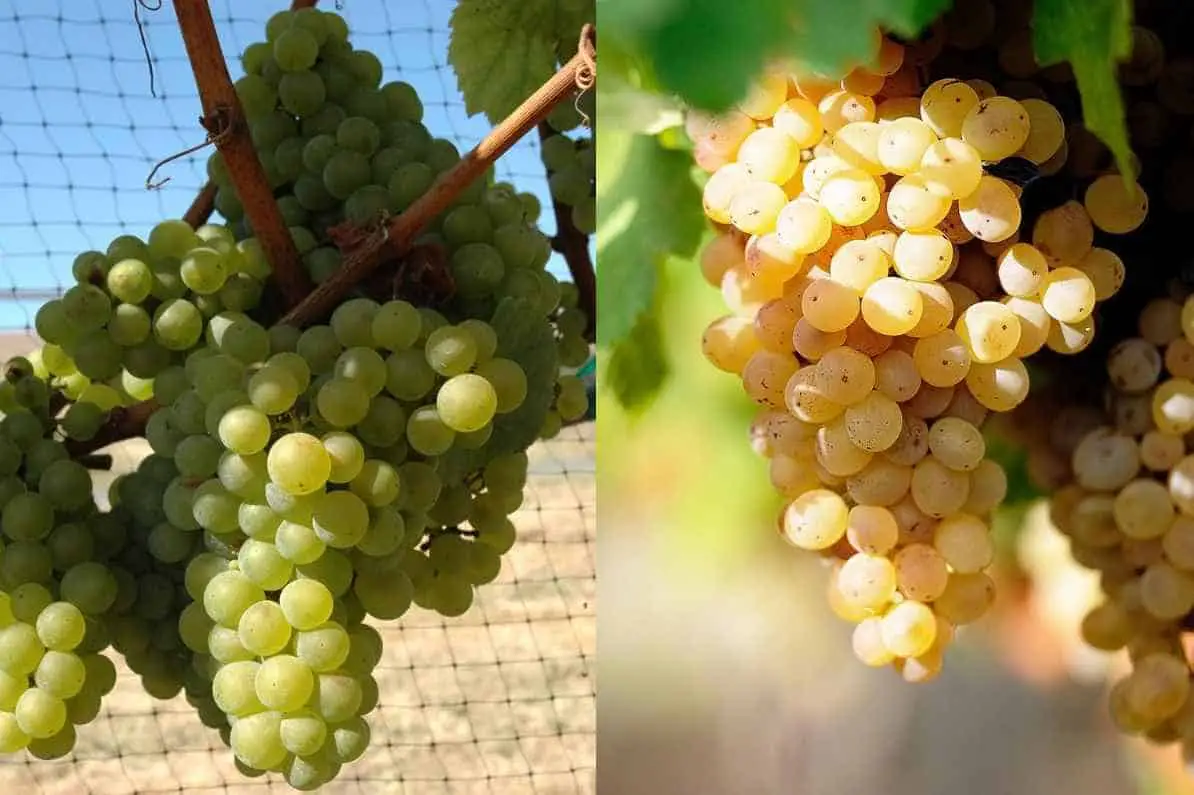
Chardonnay and Sauvignon Blanc both come from white grapes, which leads to wines of similar color. However, no two white wines have the same colors since the concentrations in the grapes’ flesh and skin are different.
Sauvignon Blanc is generally lighter than Chardonnay, with the former having a light lemon green color while the latter is darker, looking like pale gold. This gold color can turn deeper in oaked Chardonnay, as this process introduces more oxygen into the final product.
Taste
Chardonnay and Sauvignon Blanc taste completely different thanks to their different grape varieties and fermentation styles.
Chardonnay is full-bodied and complex, while Sauvignon Blanc is lighter and green. In addition, Chardonnay is generally drier than Sauvignon Blanc, although both are known as dry wines.” Let’s get into more detail.
Chardonnay

The Chardonnay wine comes from Chardonnay grapes, an easy-to-cultivate cross between Gouais Blanc and Pinot Noir. It’s a highly versatile wine with flavors that reflect where it was grown and how it was fermented.
Since the Chardonnay grape is adaptable, it can be cultivated in many regions with different climates. Some of the most recognized regions for Chardonnay grapes include:
- France
- Spain
- Italy
- United States
- Australia
- New Zealand
If the grape grows in cold climates, the final wine will have a more citrusy, crisp, and floral character. On the other hand, warm climates give rise to lush and tropical notes like pineapple, melon, papaya, and mango.
Oaking can also affect the final note, producing vanilla, creamy, and buttery notes. Baked apple, hazelnut, butterscotch, and pie-crust are the most dominant flavors in oaked Chardonnay. However, the oak barrel itself can affect the flavors. If the barrel has been used several times, the oak’s flavor diminishes, producing a leaner flavor.
Even the length of aging can affect Chardonnay’s taste profile, yielding green apple flavors in young Chardonnays and lemon hints in older varieties.
Normally, Chardonnay is aged in oak barrels for 13 months. However, this can change based on the condition of the oak —whether it’s new or used— and the flavor the winemaker aims to reach.
Moreover, the type of yeast and fermentation temperature significantly affect its taste and texture. The yeast strain can affect Chardonnay’s weight and fruit-forwardness as it alters the wine’s alcohol content and acidity.
Sauvignon Blanc
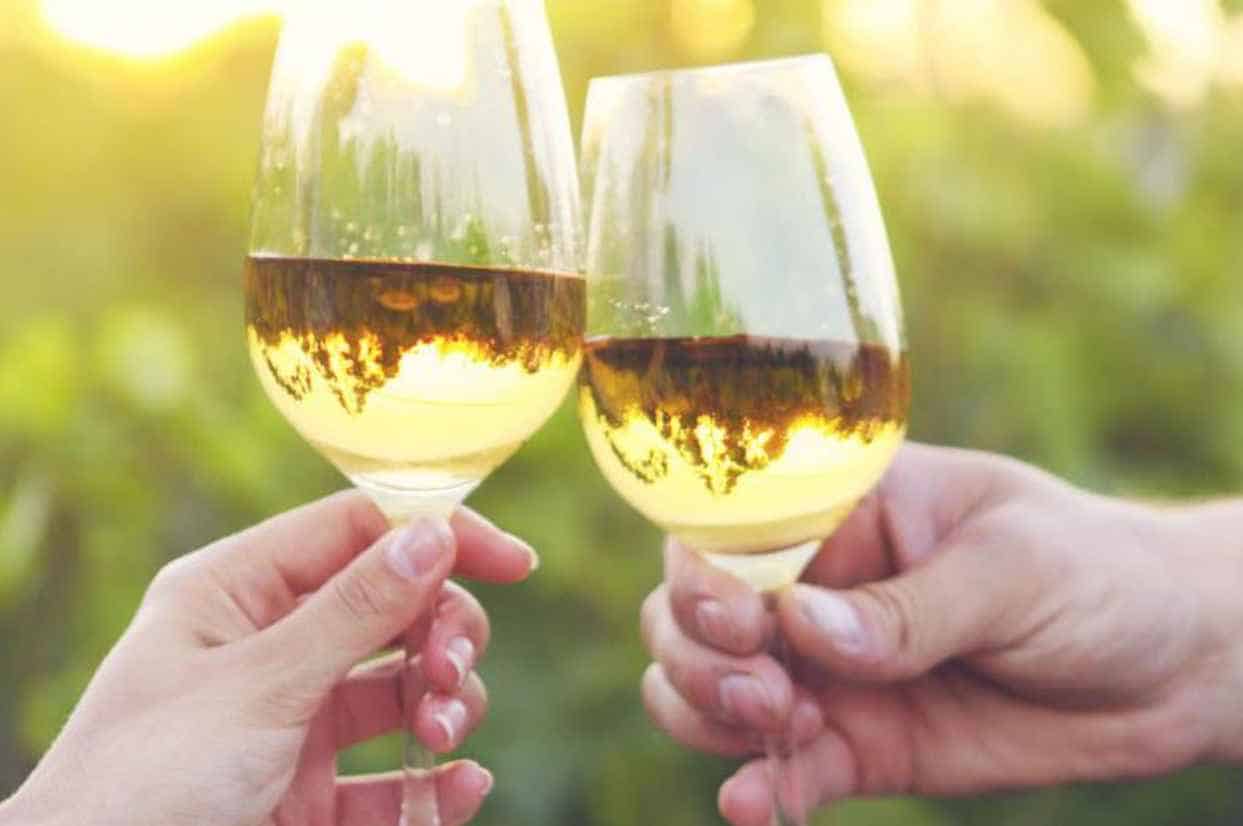
Sauvignon Blanc is also widely planted worldwide, giving it a diverse flavor profile due to the varieties across soil qualities, planting techniques, and winemaking processes and materials.
Generally speaking, Sauvignon Blanc has a grassy, mineral, acidic, light-bodied, and floral taste. If the grape is grown in warm climates, the resulting wine will be weightier, creamier, and with tropical fruit notes like gooseberry and pineapple. On the other hand, colder climates yield more acidic, crisp, and fruit-forward.
Fermentation processes are more uniform in Sauvignon Blanc, with stainless steel tanks being the staple of winemaking containers to retain the wine’s acidity. Oaking is also an option with Sauvignon Blanc, although it’s not as widespread as Chardonnay.
One of the most famous oaked Sauvignon Blanc varieties is Fumé Blanc, widely known in the US. It’s an innovation by Robert Mondavi, who was looking for a way to turn the grassy, sweet French Sauvignon Blanc into a fruity white wine with a Chardonnay-like texture and creamy mouthfeel.
Fermentation Process
The fermentation process mainly involves the medium used for aging the wine: oak barrels and stainless steel containers.
Chardonnay
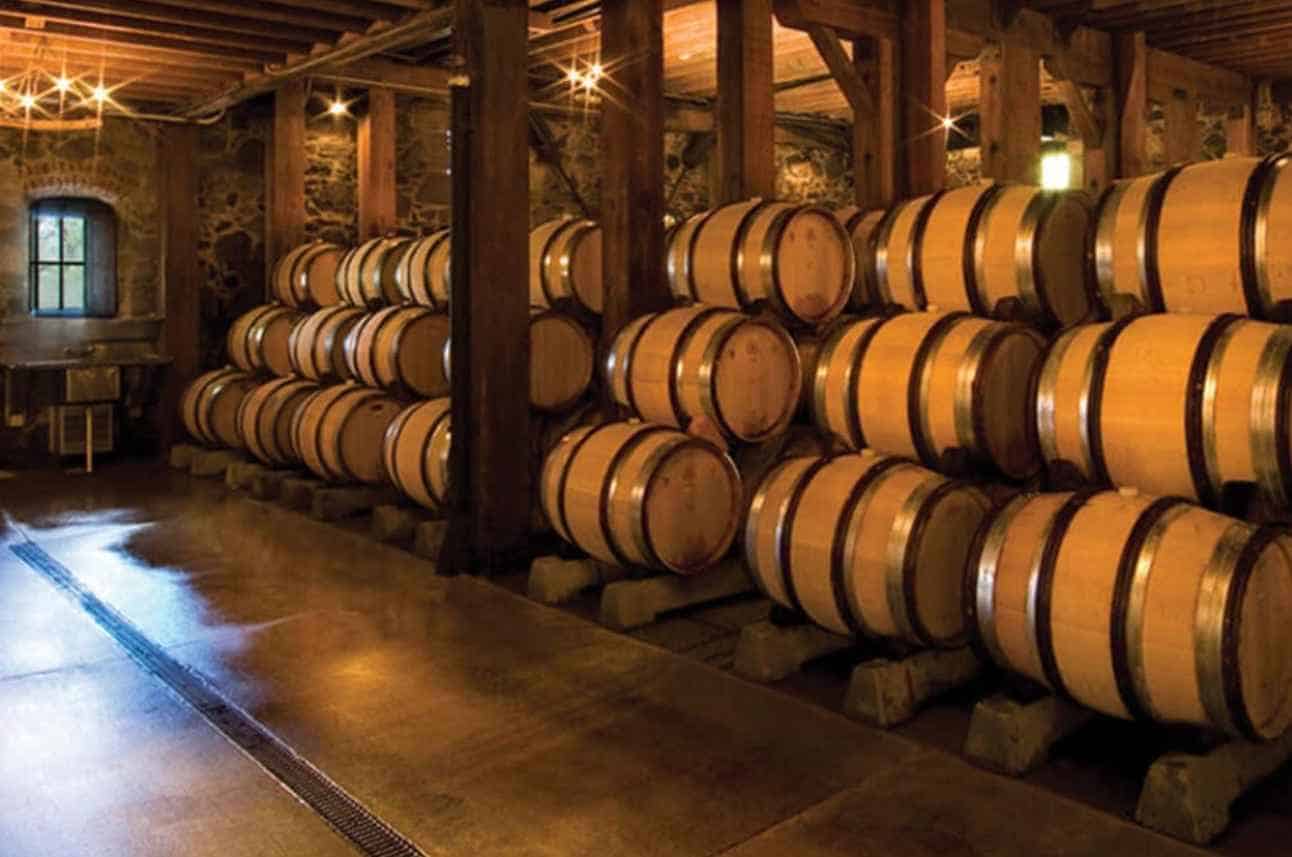
The process of making Chardonnay is different depending on the target taste profile. If the vintner is aiming for the signature, buttery taste of Chardonnay, they’ll oak the wine to change its acidity profile, and the final result is a vanilla flavor and creamy body.
Oaking is the process of storing and aging the wine in oak barrels, which have elaborate preparation techniques to introduce flavors into Chardonnay. The oak wood is exposed to heat in a toasting process, with higher toasting degrees delivering creamier flavors.
This process is known as malolactic fermentation. During this process, the bacteria on the grape’s skin convert malic acid to lactic acid, turning the wine’s acidic and tart flavor into a more rounded and softer taste and increasing the wine’s pH. Some winemakers add more bacteria to the wine to make it softer and more full-bodied.
Chardonnay can also be produced without the malolactic process to preserve its fruity, citrusy, and acidic flavor. The winemaker ferments and ages the wine in steel tanks, creating a light, crisp, and zesty flavor.
Sauvignon Blanc
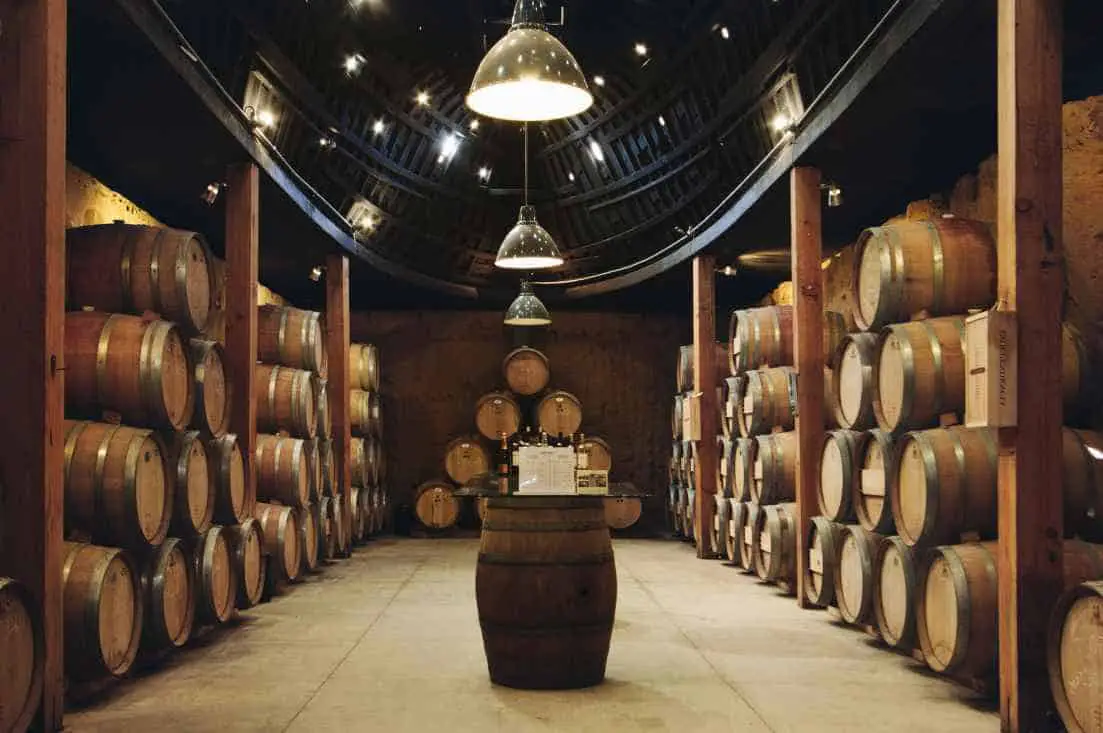
On the other hand, Sauvignon Blanc is fermented in stainless steel containers and doesn’t require aging as much as Chardonnay. Since it’s fermented at low temperatures (5-10 degrees C/42-50 degrees F), it’s light-bodied with a distinctive, fruity, and spicy aroma. Still, it’s not uncommon to see oak-aged Sauvignon Blanc, as some winemakers like experimenting with different methods to create new flavors.
Sauvignon Blanc isn’t as age-worthy as Chardonnay due to its lower tannin content. Tannins are polyphenol compounds found in white and red wine, giving them a bitter and astringent flavor. So, while you can enjoy a bottle of Sauvignon Blanc just a few months after bottling, you need to wait at least two years for Chardonnay.
Here’s a rundown of variations in taste based on different factors.
| Oaked | Unoaked | Warm Climate | Cool Climate | |
| Chardonnay | Creamy, full-bodied, vanilla | Fruity, citrusy, acidic | Lush, tropical fruits | Citrusy, crisp, floral |
| Sauvignon Blanc | Richer, creamier | Fruity, spicy, grassy, mineral, light-bodied | Tropical fruits, weightier, creamier | Citrusy, acidic, fruit-forward |
Alcohol Content
The main feature that determines any wine’s average alcohol content is the grape’s sugar content. The riper the grape, the higher its sugar levels.
The alcohol content in Chardonnay typically ranges from 13.5% to 14.5%, while it’s around 12%-14% for Sauvignon Blanc. Both fall under the category of medium-alcohol wines. The exact alcohol content can vary based on factors like grape ripeness and fermentation process.
Chardonnays and Sauvignon Blancs from warmer climates usually have more alcohol. That’s because grapes in these regions ripen more quickly and contain more natural sugars. On the other hand, colder-climate vines are more acidic, meaning the final wine will have less alcohol.
Price
Generally speaking, Chardonnay and Sauvignon Blanc are considered affordable among white wines. That’s because their grape varieties are hardy and widely cultivated worldwide. However, you can still find some of the finest, premium-quality Chardonnay and Sauvignon Blancs for over a thousand dollars.
That said, for most consumers, quality Chardonnay and Sauvignon Blancs cost under a hundred dollars. And generally speaking, shorter aging makes Sauvignon Blanc cheaper than Chardonnay.
If you want to enjoy a glass of fine Chardonnay, you can get it for $10-$50 a bottle, with French varietals landing on the more expensive end of the price spectrum. This price can go up to $3000 for Burgundy Chardonnay.
The price tag is slightly lower for Sauvignon Blanc, ranging from $10 to $40. On the higher end of the spectrum, the price can vary between $130 and over $6000.
Food Pairings

Since Sauvignon Blanc is herbaceous, it goes well with many salads and vegetarian foods, including Caesar salad and ceviche. It also pairs well with the following ingredients:
- Asparagus
- Avocado
- Chicken
- Pork
- Fish
- Cheese
It also pairs perfectly with herby foods containing dill, artichoke, oregano, or rosemary. The acid content helps bring out flavors in the food. It’s even perfect for foods containing acidic additions, such as guacamole, which contains lemon juice to balance its creamy texture.
Chardonnay has similar food pairings to Sauvignon Blanc. It goes well with creamy and buttery dishes, washing away the extra fat and giving you an extra sense of freshness.
However, Chardonnay, especially oaked versions, doesn’t always pair well with dishes that have sharp, pungent, or spicy flavors. Therefore, you may want to avoid certain dishes with high levels of spice or acid when drinking Chardonnay, as they can make the wine taste sour.
Storage Requirements
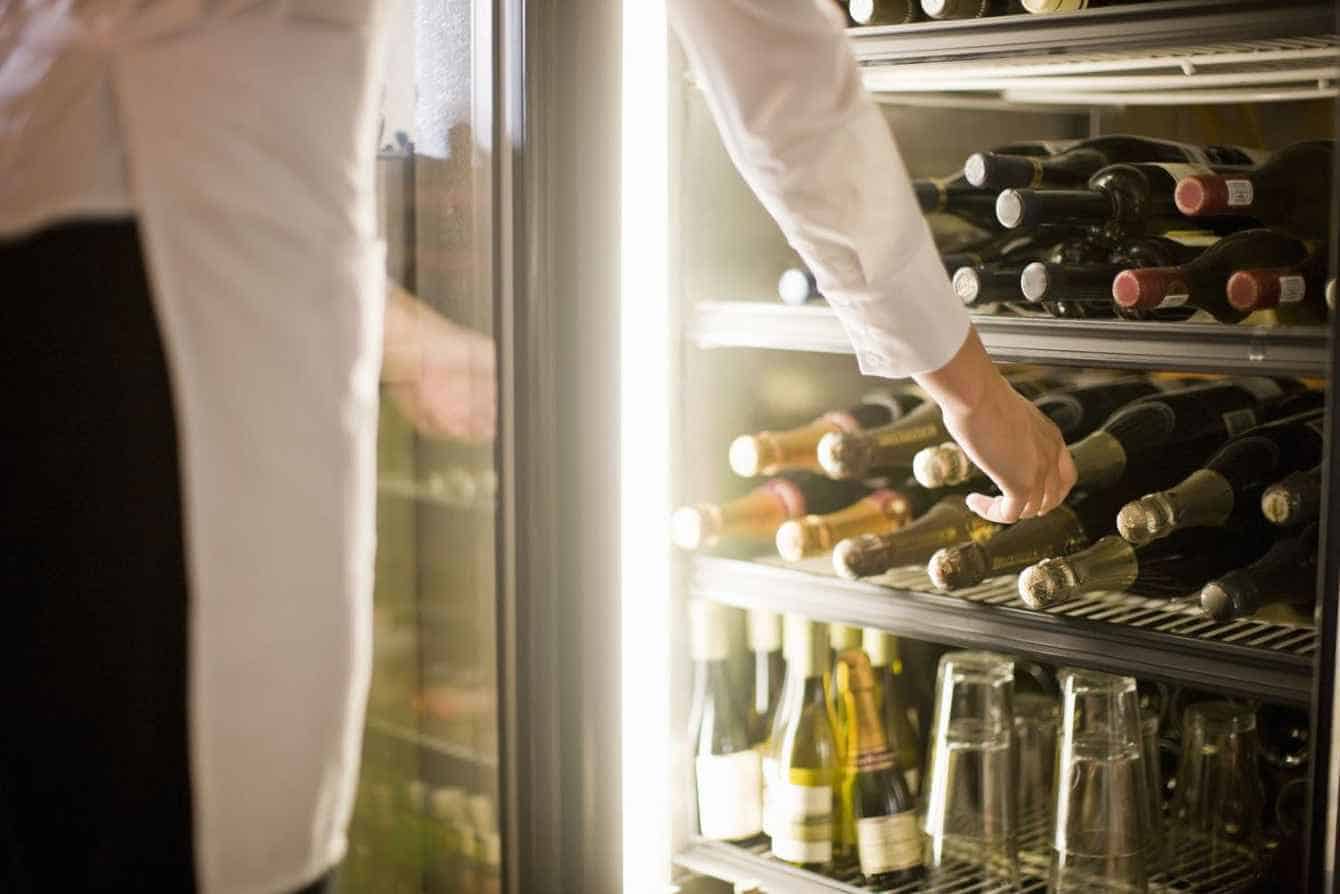
Chardonnay and Sauvignon Blanc have similar storage temperatures. However, since Chardonnay is full-bodied, it should be stored and served at higher temperatures.
While Sauvignon stores well at 43°F- 45°F (6°C-7°C) due to its crispiness and acidity, Chardonnay fares well at higher temps of 50°F- 54°F (10°C-12°C) to retain its buttery and creamy notes. Store them at higher or lower temps than these recommended values, and you’ll risk losing much of their flavors and texture.
In addition, both wines should be stored in a humid place with up to 80% humidity to prevent the cork from drying. If the cork loses its humidity, air can get inside and soil the wine. Another way to retain white wine humidity is storing the bottle lying flat to keep the cork moist.
Plus, if you plan to store Chardonnay or Sauvignon Blanc for long (more than 4-6 months) —although the latter has a shorter storage life—keep them where you don’t need to move them frequently. This way, you can keep them fresh for longer.
Other Popular White Wines
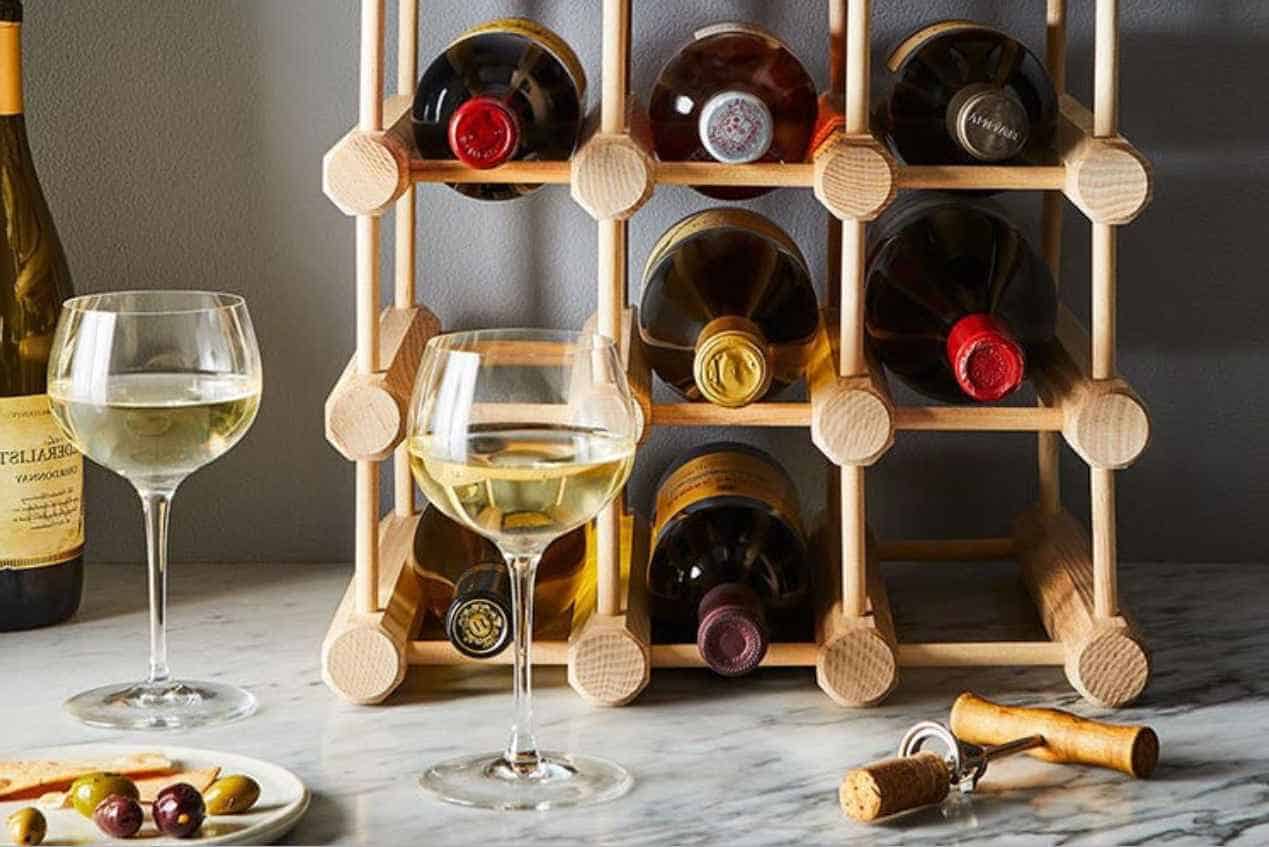
Although Chardonnay and Sauvignon Blanc are great for wine lovers who want to switch from red to white, they’re not the only options. There are other white wine varieties that are equally popular among beginners and connoisseurs.
Pinot Grigio
Having its roots in Pinot Gris, Pinot Grigio is among the most popular white wines celebrated for its crispy acidic, and floral characteristics. The grapes are also widely grown across Europe, North America, and Australia, lending themselves to cold and warm climates.
This dry wine is light-bodied, with strong hints of citrus fruits, and can be sweeter or drier based on its growing environments. Like Chardonnay and Sauvignon Blanc, Pinot Grigio exhibits terroir, with fruity notes more salient in grapes grown in warmer climates and acidity and stone notes in Pinot Grigio from colder regions.
Riesling
Another terroir-specific white wine is Riesling, originating from Germany. This food-friendly wine uniquely balances acidity and sweetness, bringing out flavors in creamy and light foods equally.
Depending on the region it hails from, it can have various flavors, from lemon and lime to peaches, apricWente Vineyards Riva Ranch Chardonnayots, apples, and pears.
Best Chardonnays to Try
As the most popular white wine, Chardonnay has something for everyone. Even if you have a particular taste in wine, you can be sure there’s a Chardonnay out there that pleases your picky palate!
Here are the best Chardonnays to try:
- Boschkloof Chardonnay for casual drinkers
- Wente Vineyards Riva Ranch Chardonnay for beginners
- Corey Creek Coquillage Chardonnay, if you like mineral notes
- Patz & Hall Sonoma Coast Chardonnay for a pleasant tartness and acidity
- Hirsch Vineyards Chardonnay if you’re after premium quality
Best Sauvignon Blancs to Try
The wide selection of Sauvignon Blanc wines can spoil you for choice and make it difficult for you to decide.
Here are the best ones you can’t go wrong with:
- Robert Mondavi Winery for a light, smooth white wine
- Illumination Sauvignon Blanc for tropical, fresh, and citrusy flavors
- Villa Maria Private Bin for the budget-minded
- Foppiano Vineyards for a sweet dessert wine
Summary
As two of the most popular white wines, Chardonnay and Sauvignon Blanc can both be great candidates for daily drinking and special occasions. They exhibit the land they’re grown in by showing different taste profiles.

